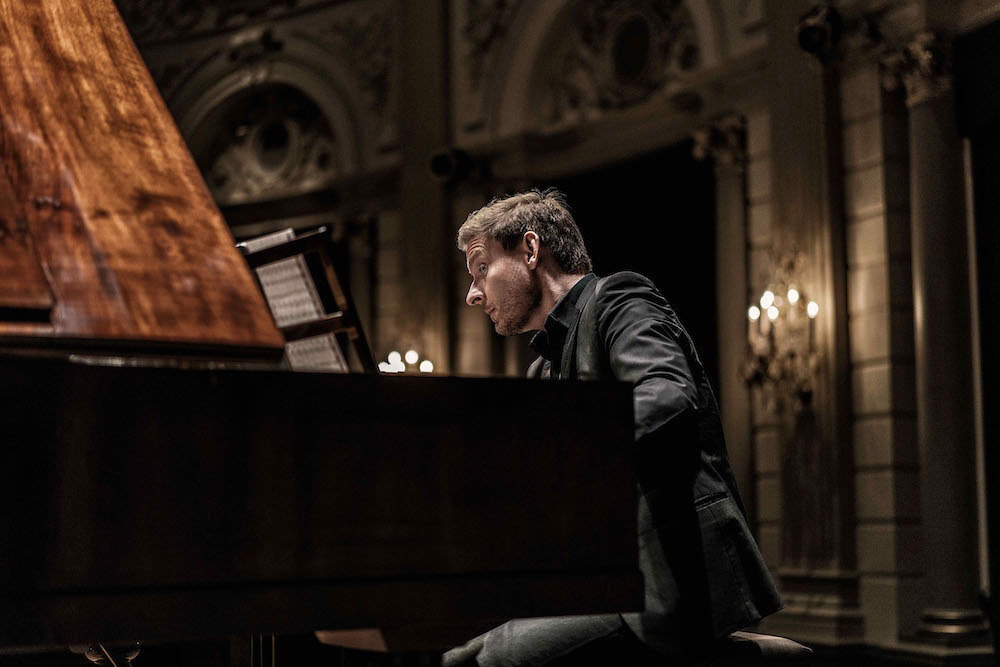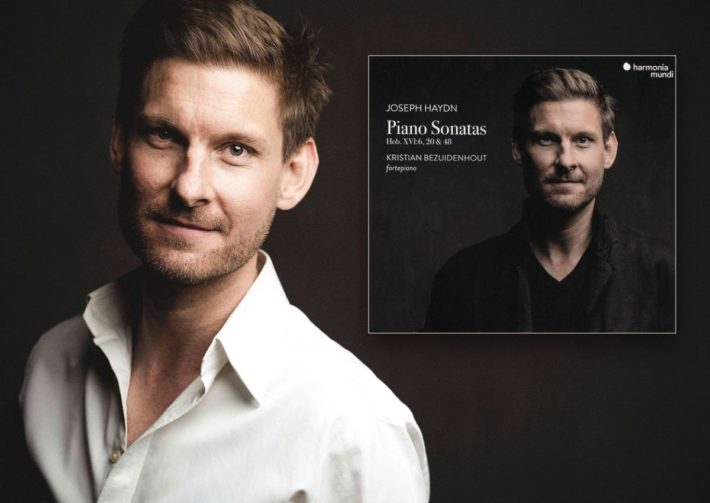After the completion of his impressive complete survey of Mozart piano music, Kristian Bezuidenhout turns his attention to Haydn. No word yet if this is going to be a new cycle, but judging from this album listeners will eagerly await new volumes. He plays the same instrument and with the same acoustic and recording quality as before (a copy of an Anton Walter fortepiano), but there is where the similarity ends. Never has the musical character’s differentiation between the two composers been so clearly exemplified as here.

Bezuidenhout’s Haydn is a journey of discovery, traveling through the old master’s imaginative control over form, with superb control of touch and color, putting to rest the claim that Haydn was merely an adequate pianist.
Most of the repertoire compiled in this release has been recorded by period instrumentalists such as Ronald Brautigam and Andreas Staier. The comparison is fascinating. In the C Minor Sonata which opens the album, Bezuidenhout is retrospect, with meaningful rests and exciting ornamentations added in the repeats (he observes most). Brautigam is similar in approach to rhythm and phrasing, but less free in tempo fluctuation and virtually avoids any addition to the original text. Staier is the most direct, matter-of-fact performer of this sonata, with his pianoforte’s timbre slightly thinner, which suits the interpretation. Bezuidenhout is not shy of using his instrument’s voicing capabilities provided by its pedals, and the slow movement enjoys a multicolored treatment, not available with the other two performers.
The early partita in G, Hob. XVI:6 is enthusiastically played, especially in the outer movement. But in the lovely Adagio Brautigam has the edge, with a calmer, flowing version (Bezuidenhout soft pedal here may be a bit too much). Nothing wrong with the other 3 movements though, with the intricate finger works coming through clearly with playful glee.
The C Major Sonata (Hob. XVI:48), a masterpiece of the late period, receives a remarkable performance here, certainly one of the most persuasive ever made on a period instrument. It again shows what an advantage a good performance on a fortepiano can bring to a well-known sonata – sounding completely free and at the moment, moving along with ornamentations that sound made up on the spot, keeping the listener alert even in the poignant, slow transitions of the first movement.

The album includes two sets of theme and variations, with the more meaningful being the famous F Minor double variations (Hob. XVII:6), one of the composer’s final contributions to the instrument. It’s a wonderful rendition, full of wisdom, sense of form, dark sadness and suspenseful progression to the culminating coda (12:15 onward). Brautigam and Staier both had a great performance of this piece, but not as good as this.
This can be easily recommended to any Haydn enthusiasts, even those who already own one of the versions mentioned. It’s also a great accompaniment to superb modern instruments version of this repertoire, namely the immaculate Brendel and the ever-creative Schiff. Highly recommended.
Top Image: ©️ Harmonia Mundi and ©️ Marco Borggreve
Haydn – Piano Sonatas No. 20, 48. Partita (Divertimento), Hob.XVI:6, Variations “Gott erhalte Franz den Kaiser”, Variations in F Minor, Hob.XVII:6.
Kristian Bezuidenhout – fortepiano
Harmonia Mundi, CD HMM902273




















